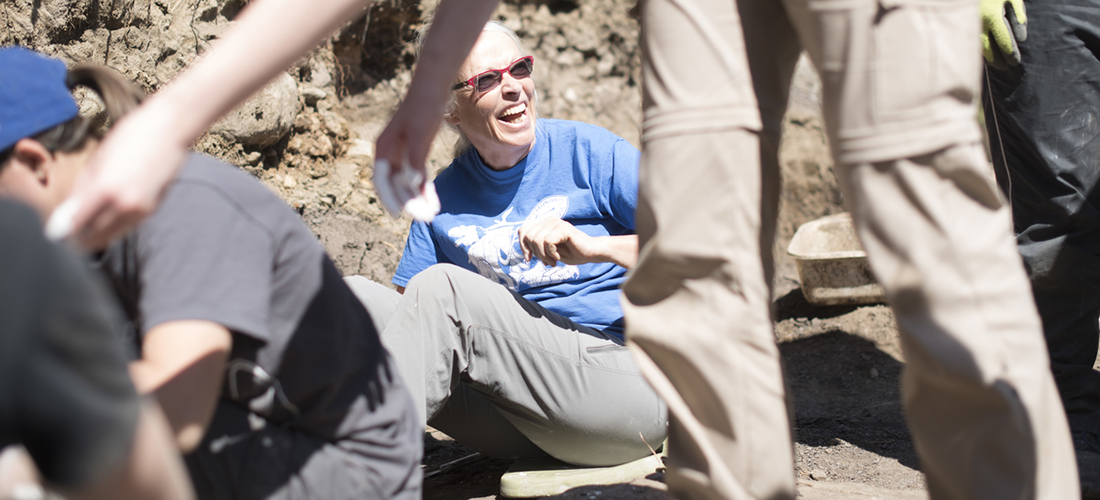
Palynologist Eva Koppelhus in the field with students.
The newest assistant professor in the Department of Biological Sciences unites two of the department's strengths-paleontology and botany. "Botany is one of those studies that is represented in everything we do," says Eva Koppelhus, who has also been appointed as the new curator of the University of Alberta's Paleobotanical Collection. "Evidence of the prehistoric past gives us an idea of how far some plant lineages go back in time and how evolution changed plants and made them better suited for their environment."
"Time is a hard thing for people to comprehend. We are talking millions and millions of years. But where they can see connections and what they can really relate to are the plants." -Eva Koppelhus
"We need to understand the fossil record of botany," says the Danish Koppelhus, who has been in Canada for 20 years, first at the Royal Tyrrell Museum and most recently as a research associate in the paleobiology program at the University of Alberta. She is looking forward to getting back to her roots in palynology (or ancient dust)-through the study of ancient spores and pollen-and paleobotany. "It has always fascinated people that, when they found fossils, they could recognize and actually see that it was a plant or part of a plant," she says of one of the oldest, and arguably most important, branches of paleontology. "People have studied this for more than 300 years."
Unlike other areas of paleontology-including dinosaurs and ancient sea creatures, which can be hard for modern humans to grasp as a previous reality-plants are still around, and some species are even very similar to their ancient relatives. "Time is a hard thing for people to comprehend. We are talking millions and millions of years. But where they can see connections and what they can really relate to are the plants."
Koppelhus says the thing she is most looking forward to in her new role is working with students. She reflects on her own time as a botany student with a burgeoning interest in the paleontological aspect of the field. "There were so many unanswered questions, and it's still a puzzle how some of these plants evolved."
For her teaching as well as her various research projects with students-both at the undergraduate and graduate level-Koppelhus will be drawing on a collection of more than 127,000 specimens. "I feel like the luckiest person in the world," she says. "We have a very good collection here at the University of Alberta."
In Botany 411, the course she is teaching in the winter 2016 term, Koppelhus' students will have the opportunity to study hundreds of specimens. She has also created a virtual lab, so that in addition to firsthand exposure during the weekly lab, students can have additional specimen access from home.
She is already working on special projects with a handful of undergraduate students, recruiting graduate students, and tackling research projects. In addition to several local projects from Alberta, including Dinosaur Park, Grande Prairie, and the Danek bonebed-the site of the Paleontology 400 field school-Koppelhus is working on ancient spores and pollen that she found at a dinosaur site in Mongolia which was poached by fossil hunters. She is also working on the stem of a fern found on James Ross Island in Antarctica. An intrepid world traveler, Koppelhus was named as one of Canadian Geographic's top 100 explorers in 2015.
"Having Eva join our team as assistant professor provides us the opportunity to focus interest remind everybody of the importance of our paleobotanical collections," says Michael Caldwell, Chair of the Department of Biological Sciences. "We have a rich heritage of providing training and education on the ancient history and evolution of plants. Our collection represents about 60 years' worth of investigation into paleobotany and plant evolution at the geological time scale. You really do need a specialist to tap into this, and we are really looking forward to having Eva on faculty."